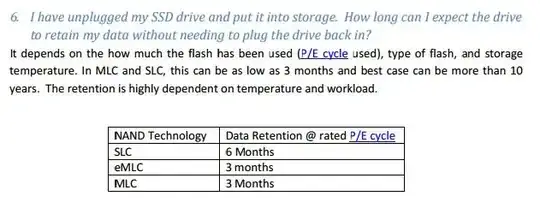The claim is not true.
To meet JEDEC (Joint Electron Device Engineering Council ) requirements the data retention requirement for a client SSD is one-year at 30°C (source), and for enterprise storage disks it is 3 months at 40°C at the end of its prescribed service life.*
That last addition is crucial. The data retention attribute changes over the lifetime of a NAND flash-based device (source). When a NAND flash device is new from the factory, it can retain data in an unpowered state (at specific temperature conditions) for many years. However, data retention specs are not given for a new device. Only when the SSD has reached its end-of-life (i.e. after a specified amount of data was written to the drive, we are typically talking about Petabytes here), do these specs come into play.
The second document I quote goes in detail into the relation between endurance and data retention.
Note that it specifically warns:
The implication is that old and well-worn NAND flash storage devices are not intended for archival data storage. At the end of a device’s service life, the device should be retired and the data onboard should be transferred to a new device. The three-month JEDEC spec is set specifically to give the system administrator plenty of time to accomplish this data transfer, if necessary.
* So it's easy to see where those '3 months' came from
